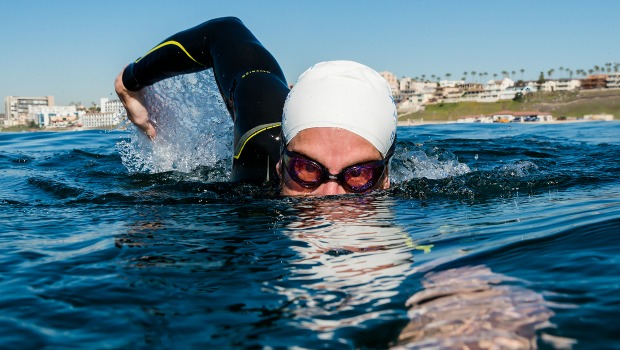
Photo: Sexton Gallery
Tempo run. Pool swim. Hill repeats. Long ride. Yoga. Recovery day. Swim.
Your training blueprint is perfectly spelled out for you weeks in advance. Your bike and run workouts are probably structured by power, distance, intervals and heart rate, yet your swim workouts have less specificity to them—leaving you with only a general idea of how to improve your swim.
There are three very distinct disciplines of triathlon swim training, each of which deserve discerned attention weekly. Value these focuses equally to become a better-equipped open water swimmer and overall triathlete.
FITNESS
Just as you'd imagine, building fitness in the water is similar to building bike or run fitness, but aimlessly logging yardage will only take you so far. Establishing a base fitness through consistent swimming is the first order. Finding a local masters group can help establish fitness and increase comfort in the water.
Having purpose to your workouts is key. If you're able to swim two to four times a week, be sure that each workout is different and has specific goals. For example, it helps to have a distance workout with technique focuses, an interval/anaerobic workout and a mixed workout of fast sets and long, moderate sets.
Constructing a thoughtful swim workout plan is necessary to improve as a swimmer, but most importantly, it will help to keep things interesting and motivating.
TECHNIQUE
Swimming is incredibly technical. Making a small change in your stroke creates many ensuing effects—many of which are typically not intuitive or even noticed. Additionally, the changes that need to be made to your stroke can be unclear. A base understanding and knowledge of freestyle mechanics is necessary for your development as a swimmer and triathlete.
Having a coach on deck to look at your stroke and provide immediate feedback is the most effective way to learn about swim mechanics and how to apply them. Research credible coaches in your area and take a lesson to see how well you two work together. If a coach is out of your price range, read articles and books written by coaches. I've put together a few basic articles addressing each of these three training focuses: Adjustable Swim Workout Sets For Triathletes, How to Correct Your Swim Stroke and How To Train For An Open Water Race In The Pool.
Remember, making changes to your stroke can take a long time. Like a golf swing, repetition is required to produce any changes. Be diligent with the drills and mechanic focuses you have to work on and they will ultimately become engrained in your stroke.
OPEN WATER SKILLS
The amount of time invested in the open water is often the most overlooked aspect of triathlon swim training. As a triathlete, you are an open water swimmer, which means that you need to train as one, too.
It takes time and experience to understand the dynamic movement of the open water, how to navigate from point-to-point and how to most effectively swim in a pack. Find a local body of water and meet for weekly open water swims with local athletes or a tri club. Not only will this camaraderie hold you accountable, but it will also create a safe and supportive environment as you gain experience in open water.
Focus the majority of your time on the skills you'll need on race day. For example, learning proper sighting techniques will ensure you have the most direct course possible—ultimately cutting out extra distance and therefore saving you time. Practice sighting in both the pool and open water to integrate the mechanics into your freestyle stroke. Beyond this, practicing drafting and pack swimming, entry and exit through the surf and distance pacing will all improve your mastery of the open water.


